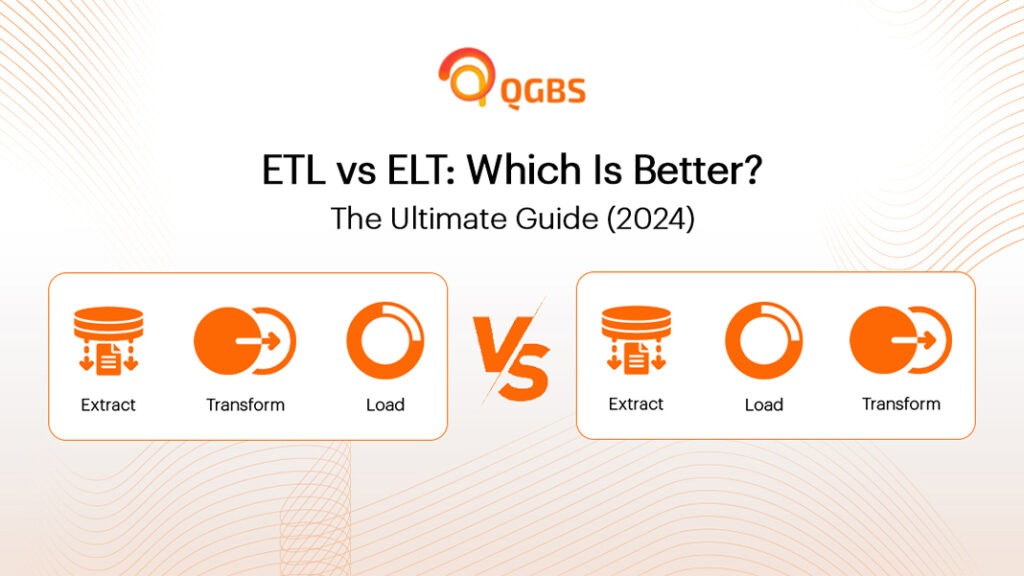
In the world of data processing & analytics, two acronyms that are frequently rising include ETL & ELT. Well, these might sound similar, but extraction, transformation, and loading are unique processes that have unique work flows, benefits, & use cases. So, to know about the same, it’s important to understand the differences between them to make informed decisions in data management & processing strategies.
To learn thoroughly about them, let’s have a look at this helpful insight & make the processing convenient. Let’s dive in:
Table of Contents
This mainly stands for Extract, Transform, & Load. It’s basically a traditional process which involves the extraction of data from various sources, which later gets transformed into suitable format or structure. And for the actual results, they get loaded to the target database or data warehouse. This process has been continuing for decades & is widely used in various data warehousing & business intelligence applications.
After knowing this, let’s have a look at what is involved in the ETL process:
Step1: In this process, the first step is to extract the data from multiple heterogeneous sources, such as databases, APIs, & many more.
Step2: Now, the next step is to transform the extracted data into a format suitable for analysis. The step involves thorough cleaning, filtering, aggregation, & enrichment to complete the process stress free.
Step3: Once the data is conveniently transformed, there is a need to load the same so that it can be used to prepare reports & analyses.
Like successful completion, the process does offer benefits that make it more interesting. Let’s know about them:
Improves Data Quality: The processes ensure that data is cleaned properly before loading & transformation, as if anything goes wrong, then nothing will be managed conveniently.
Ease the Compliance & Governance Policies: Through this, the requirements during the transformation phase get managed conveniently.
Improves Efficiency: This provides the benefit of transforming complex transformations & letting the data get loaded conveniently.
Here, we will discuss about what is ELT process:
ELT stands for Extract, Load, Transform, & is a process that reverses the order of the last two steps of ETL. In this process, data is first extracted & loaded into the target system, resulting in a transformation that is performed on the loaded data. Further, have a look at the steps involved in this process to get a better idea.
Extraction: The process at first starts with the extraction of data from various sources.
Loading of Data: Now, once the data is extracted, it gets loaded directly to the target database or data warehouse.
Transformation: After the loading is done, data transformation occurs within the target system using its processing power as well as its capabilities.
Here, after the processing, there are many benefits that people do get, but people don’t know about them. So, for that, let’s have a quick look at them:
Enhances Scalability: Leverages processing power, which results in handling large volumes of data efficiently.
Offers Flexibility: The ELT process offers easier handling of changing data schemas & structures as transformations can be adjusted after loading.
Improves Speed: As, the data is loaded, it takes less time to transform the data as per the need.
To learn about the difference, have a look at the key differences in etl vs elt
The workflow is different because etl and elt tools are used in both processes, including:
ETL: In this, data is extracted, which then gets transformed to loaded for usage.
ELT: Here, after the data extraction, it first gets loaded, then starts the transforming process to provide amazing results.
ETL: In this, immediate storage takes place, which can somehow slow down the working of large databases due to external transformation processes.
ELT: But in this, parallel processing takes place with the help of data platforms, which, as a result, makes the process take place faster & in an efficient way to handle large datasets.
ETL: This requires the use of complex tools & processes that need to be managed separately.
ELT: It simplifies the architecture because of its built
in processing capabilities.
The information above gives the idea that etl vs elt have their own place in modern data strategies, & the choice totally depends on the specific needs & constraints of the organization.
So, you should understand all the things carefully through the above detail, but if you still get confused anywhere, then you can get in touch with QGBS right away. We and our best team of professionals are always here to help you with the best assistance.